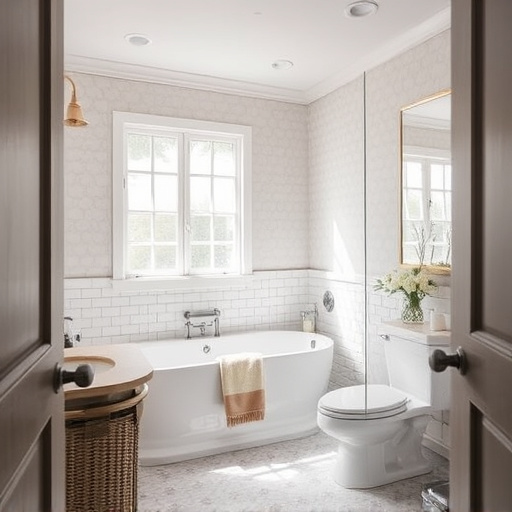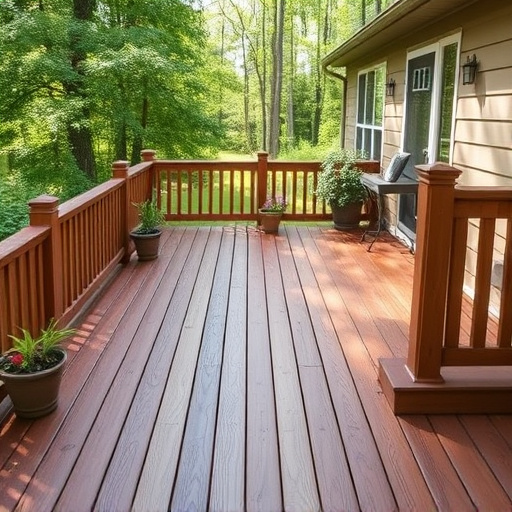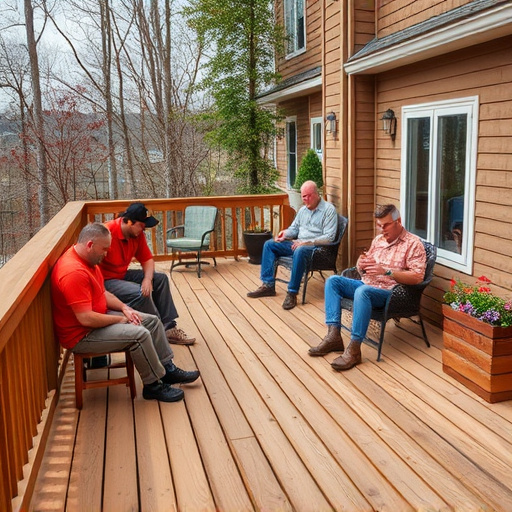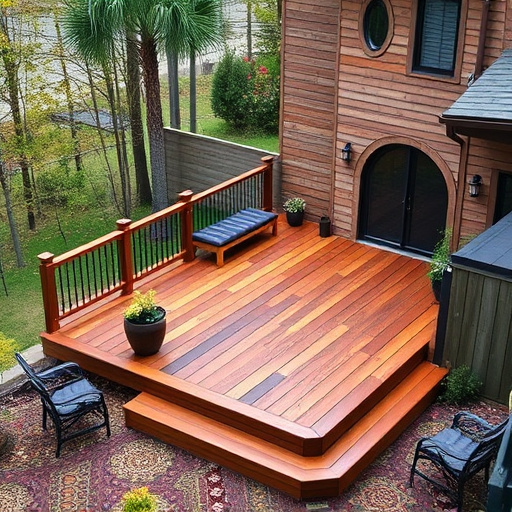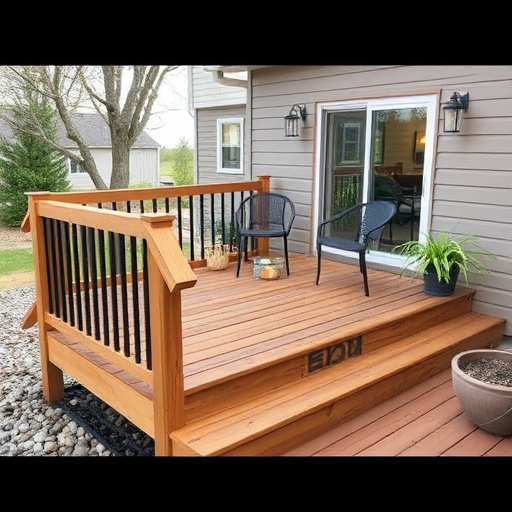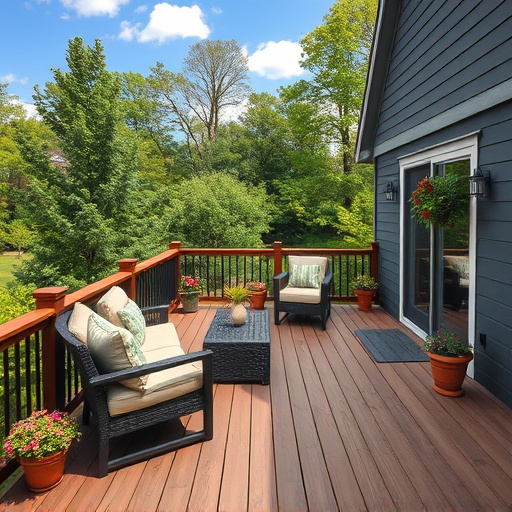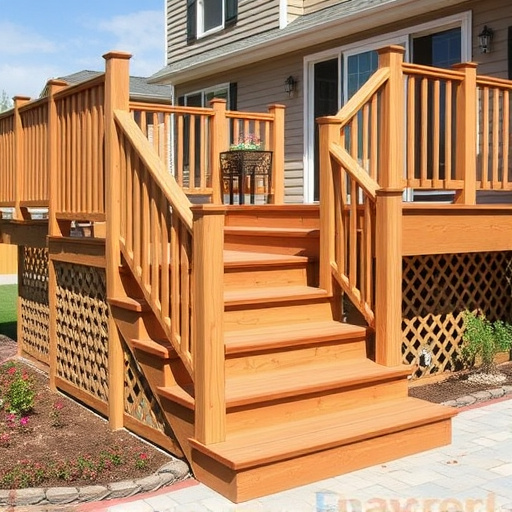Moisture, ventilation, and elements like sunlight cause wood rot on decks. Preventative deck sealing uses water-repellent stains or clear coatings to create a protective barrier. Choosing the right sealer based on climate, durability needs, and application type (residential vs. commercial) ensures better adhesion and extended protection. Power washing the deck, applying sealer with a brush or roller, and adding a second coat maximize efficacy against wood rot and decay.
Protect your deck from wood rot and decay with these essential deck sealing tips. Wood rot, caused by moisture and fungus, can compromise the structural integrity of your outdoor oasis. By understanding the causes behind this damaging process, you can choose the right sealing product to safeguard your investment. This guide offers a step-by-step approach to effective deck sealing, ensuring longevity and maintaining its beauty for years to come.
- Understanding Wood Rot and Decay Causes
- Choosing the Right Sealing Product
- Step-by-Step Guide to Effective Deck Sealing
Understanding Wood Rot and Decay Causes
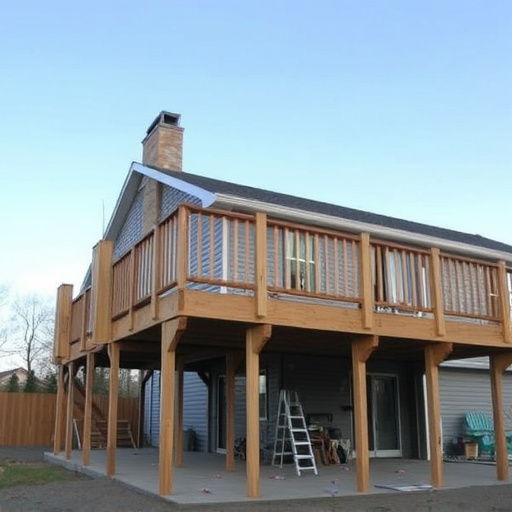
Wood rot and decay are common issues that can significantly damage outdoor structures like decks. Understanding the causes behind these problems is essential for effective prevention through deck sealing. The primary culprits are moisture, lack of ventilation, and exposure to elements. Moisture, whether from rain, snow, or high humidity, provides an ideal environment for fungi and bacteria to thrive, breaking down wood fibers over time. Insufficient ventilation traps this moisture, accelerating the rot process. Additionally, direct sunlight and extreme temperatures can exacerbate the issue by drying out wood surfaces, making them more susceptible to decay.
By addressing these factors, homeowners and professionals offering home service solutions or residential siding installations can choose suitable deck sealing products, such as water-repellent stains or clear coatings, that provide a protective barrier against moisture intrusion. These roofing solutions not only shield the deck but also help to maintain its structural integrity, ensuring longevity and preserving the investment in these outdoor living spaces.
Choosing the Right Sealing Product
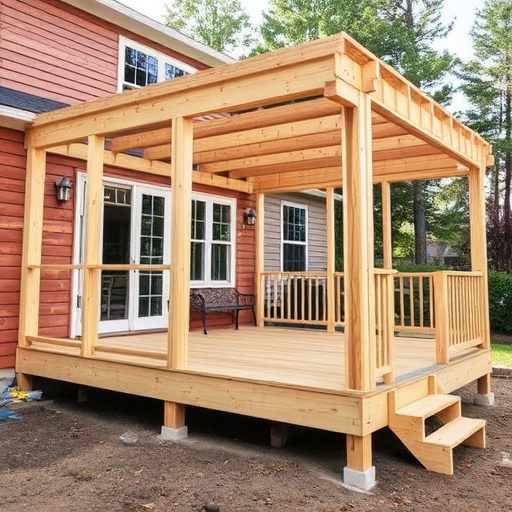
When it comes to deck sealing, choosing the right product is paramount to preventing wood rot and decay. Consider factors like your deck’s specific needs, climate conditions, and long-term durability requirements when selecting a sealer. Water-based sealers are popular due to their low odor and quick drying time, making them ideal for residential decks. On the other hand, oil-based sealers offer superior protection against UV rays and extreme weather, suitable for commercial roofing applications and exterior home improvements that demand heavy-duty protection.
For optimal results, ensure you use a high-quality sealer from reputable manufacturers. Quality products provide better adhesion, longer-lasting protection, and enhanced aesthetics for your deck or roofing services. Whether it’s maintaining a residential deck or managing commercial roofing projects, the right sealing product is a key investment in preserving wood structures and ensuring exterior home improvements withstand the test of time.
Step-by-Step Guide to Effective Deck Sealing
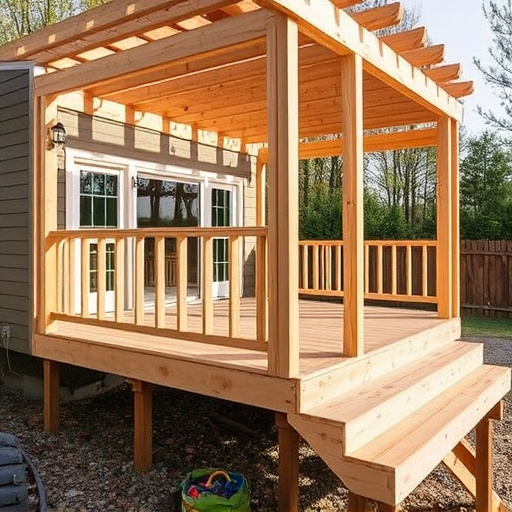
Sealing your deck is a crucial step in maintaining its beauty and structural integrity, especially in preventing wood rot and decay caused by harsh weather conditions. Here’s a straightforward guide to effectively sealing your deck:
1. Prepare the Deck: Start by power washing the deck to remove dirt, dust, and any existing debris. Ensure the deck is dry before proceeding to the next step. For areas affected by storm damage repair or siding repairs, give special attention to fixing any damaged boards or leaks in siding and gutters, as these can lead to further decay.
2. Choose the Right Sealer: Select a high-quality deck sealer suitable for your climate and wood type. Water-based sealers are generally safer for the environment and easy to apply, while oil-based options offer better protection against UV rays and extreme weather conditions.
3. Apply the Sealer: Using a brush or a roller, evenly spread the sealer onto the deck surface. Begin from one corner and work your way across, ensuring you cover every inch of the wood. For hard-to-reach areas, a small paintbrush can be useful. Allow the first coat to dry completely before adding a second coat for maximum protection.
When it comes to preserving your deck’s longevity and aesthetics, proper deck sealing is a game-changer. By understanding the causes of wood rot and decay and selecting the right sealing product, you can effectively protect your investment. Follow our step-by-step guide for optimal results, ensuring your deck remains a vibrant and sturdy feature in your outdoor space for years to come. Implement these tips and tricks for successful deck sealing, keeping both functionality and aesthetics intact.




